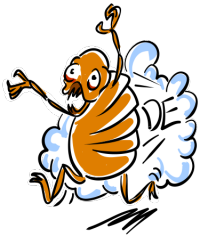
According to wikipedia: "fossilized remains of diatoms, a type of hard-shelled algae."
This is an off white powder that feels a bit like flour. Not only can you eat it, it is already in a lot of the food that you eat.
I have heard two explanations of how it works.
One is that on a microscopic level, the particles are very sharp looking. These particles stick to an insect and get stuck between its exoskeleton joints. As the insect moves, it gets physically cut up.
The other explanation is that it sticks to the insect and somehow causes them to dry out. I think this approach involves scratching the insects waxy layer which then allows precious moisture within the insect to get out.
A reader, Sue, in Washington state writes:
Both are true and connected. DE is almost pure silica (with some beneficial trace minerals); under a microscope, it looks like shards of glass (glass is made from silica). On any beetle-type insect that has a carapace, like fleas and cockroaches, the DE works under the shell and punctures the body, which then dehydrates and the insect dies. DE is totally nontoxic. There is no buildup of tolerance like there is to poisons because the method of killing is PHYSICAL, not chemical.
The important thing to us is that if an insect with an exoskeleton gets diatomaceous earth on them, they die. At the same time, we can rub it all over our skin, rub it in our hair, eat it .... whatever ... and we are unharmed.
Farmers dump diatomaceous earth by big scoops in with grains when the grains are stored. It kills the insects that want to feast on the grain. This is a great improvement over the stuff they used to put in with the grain.
Farmers feed gobs of it to animals in the hopes that it will cure whatever ails them. Many farmers swear that the stuff kills all sorts of worms in their critters.
The only concern about this stuff is that if you throw it into the air, you can make a big cloud of the stuff. Breathing that in can irritate your lungs. Just as breathing in anything other than pure air can irritate your lungs. The same concern applies to pastry flour, talcum powder, corn starch or dust on the wind from outside. The dust that gets into the air from emptying your vacuum cleaner bag is probably far worse for you than diatomaceous earth dust.
I've heard of some folks intentionally making a cloud of the stuff in a room to make sure the diatomaceous earth gets into everything. If you're going to do this, you should probably turn appliances off first so that their fan stuff doesn't get plugged with the dust. I don't go this route - all that dust makes me cough.
For flea control, I try to make a paper thin layer of diatomaceous earth wherever the vacuum doesn't reach easily and use the vacuum technique (below) also. That way, when an adult flea jumps out of its cocoon, instead of going "boing! boing! boing! boing!" it goes "piff! piff! piff! piff! urk!" I don't throw it around - more like lay it about and then spread it around slowly with my hand. Kinda like finger painting.
Note that diatomaceous earth works only on the adult stage of the flea. (Some say it works on the larval stage too) So while traveling this road for flea control, be thinking that there are lots of eggs, larva and pupa around still. The strategy is to kill the adults before they lay more eggs. If we assume that diatomaceous earth works so good that the lifespan of an adult flea is one minute, then you will continue to see adult fleas for the next two to four weeks - from the eggs already laid. They just won't live very long.
Make sure you buy "food grade" diatomaceous earth. There is some stuff used for swimming pool filters. Don't use that. There are some other varieties of diatomaceous earth that are labeled just "Diatomaceous Earth" but they have other stuff added to it. Icky stuff. The "food grade" diatomaceous earth is pure.
A great thing about diatomaceous earth is that you can leave it around the edges of your home and in hard to reach places for months or years. As long as it doesn't get wet, it will continue to work.
One time I had some fleas in my room and I just put down diatomaceous earth. I did no other flea control. I then put it out of my mind. Two days later I checked my ankles and had no new flea bites. I vacuumed up all of the dust about two weeks later, and set out a flea trap (see below). I caught one flea, then I went to the diatomaceous earth-along-the-edges and vacuum approach combined with a flea trap every night. The flea trap did turn up a flea once in a while for two weeks, and no more after that.
My first attempts at flea control with diatomaceous earth on carpet were to just sprinkle and not spread it to make a paper thin layer. This had mixed results. My sprinkle without spreading, covered about 20% of the surface. Mathematically, this means that the average flea lifespan is five times longer (if a flea has to touch diatomaceous earth 5 times to die, then that would be 5 hops with full coverage and 25 hops on average with 20% coverage). Some fleas might then live long enough to bite. Possibly long enough to lay eggs. Not good. The paper thin layer has 99% coverage and no bites were experienced.
I have heard from two people that said that they won't use diatomaceous earth anymore because "the tiny particles cut my lungs!" --- (deep sigh goes here) All I can say is "Did you actually examine your lung with a microscope and watch the diatomaceous earth cut into it?" - of course, they did not. I think the truth behind these reports is that these folks heard how diatomaceous earth works, and when they would breath in the dust, it would make them cough - just as breathing in flour or corn starch would make you cough. And then they thought of the sharpness at a microscopic level. My understanding is that when diatomaceous earth becomes moist, the sharp thing is no longer happening. That's why you have to keep it dry when you use it. Lungs are all squishy and moist. Squishy beats diatomaceous earth. Squishy, squishy, squishy.
I have encountered over a dozen ignorant boobs that have proclaimed "Diatomaceous Earth does NOT work!" I have read this statement in all caps. In extra big fonts. With italics. And I've even had it screamed at me. I'm gonna stick with "ignorant boobs". On closer inspection of each case there is always a flaw. Usually the problem is that it was not used correctly. If you put it in one place and hope the fleas are drawn to it to die, I have found that strategy sucks. Another flaw is to use it correctly, but there are still eggs hatching and fleas come out of the pupal stage. The diatomaceous earth hasn't had a chance to do its magic yet. I kinda wonder if the pesticide companies pay people to go to internet forums and say this sort of thing. diatomaceous earth is super cheap, non toxic, and generally more effective than anything the pesticide companies have to offer - so it kinda cuts into their profit margins a bit. I've been meaning to create an experiment to set the record straight on this topic, but a participant in the flea control thread, Stephanie, beat me to it:
I tried my own experiment with the DE to see how quickly it kills the fleas; I caught a few fleas and put them in a jar with a pinch of DE - all were dead within just a couple of hours.
How to get diatomaceous earth? Well, I have a lot to say about that too, so it is part of a new article I wrote on diatomaceous earth.
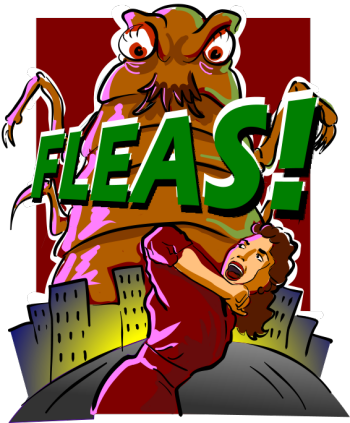

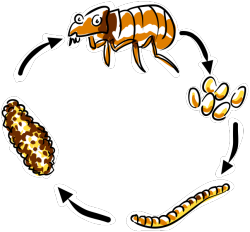
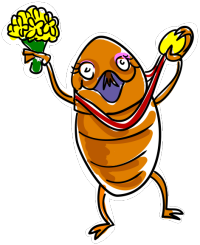 Helga's best performance ever! 14 days later, Helga's bratty kids pop out as adults. Flea sex. Eating. And then each brat squeezes out 50 eggs. Helga is so proud! So, that's 2500 eggs. 14 days after that you have 125,000 eggs! You could then say "a single flea could be responsible for 125,000 eggs in one month!" Sunnuffabitch! Where's my checkbook!
Helga's best performance ever! 14 days later, Helga's bratty kids pop out as adults. Flea sex. Eating. And then each brat squeezes out 50 eggs. Helga is so proud! So, that's 2500 eggs. 14 days after that you have 125,000 eggs! You could then say "a single flea could be responsible for 125,000 eggs in one month!" Sunnuffabitch! Where's my checkbook!
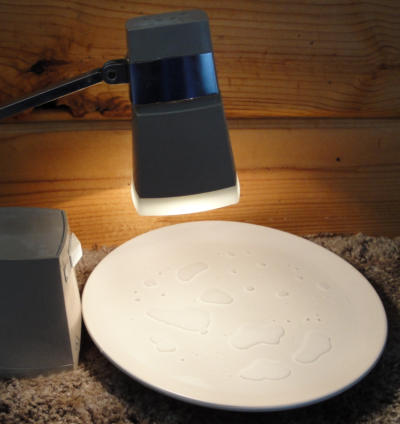
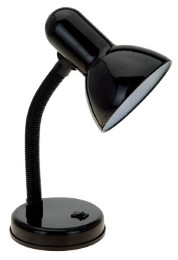 Lamp that is perfect for a flea trap
Lamp that is perfect for a flea trap

